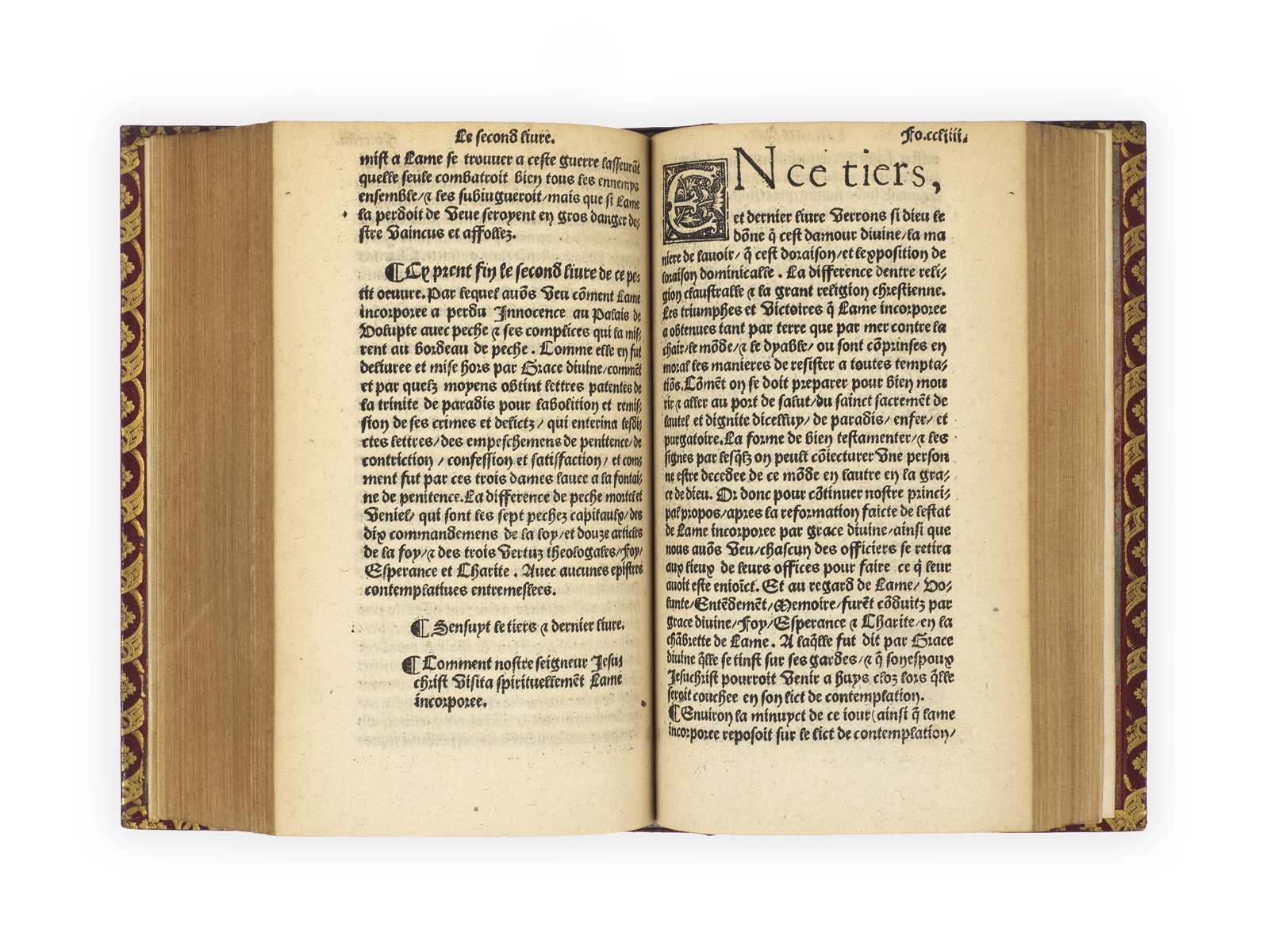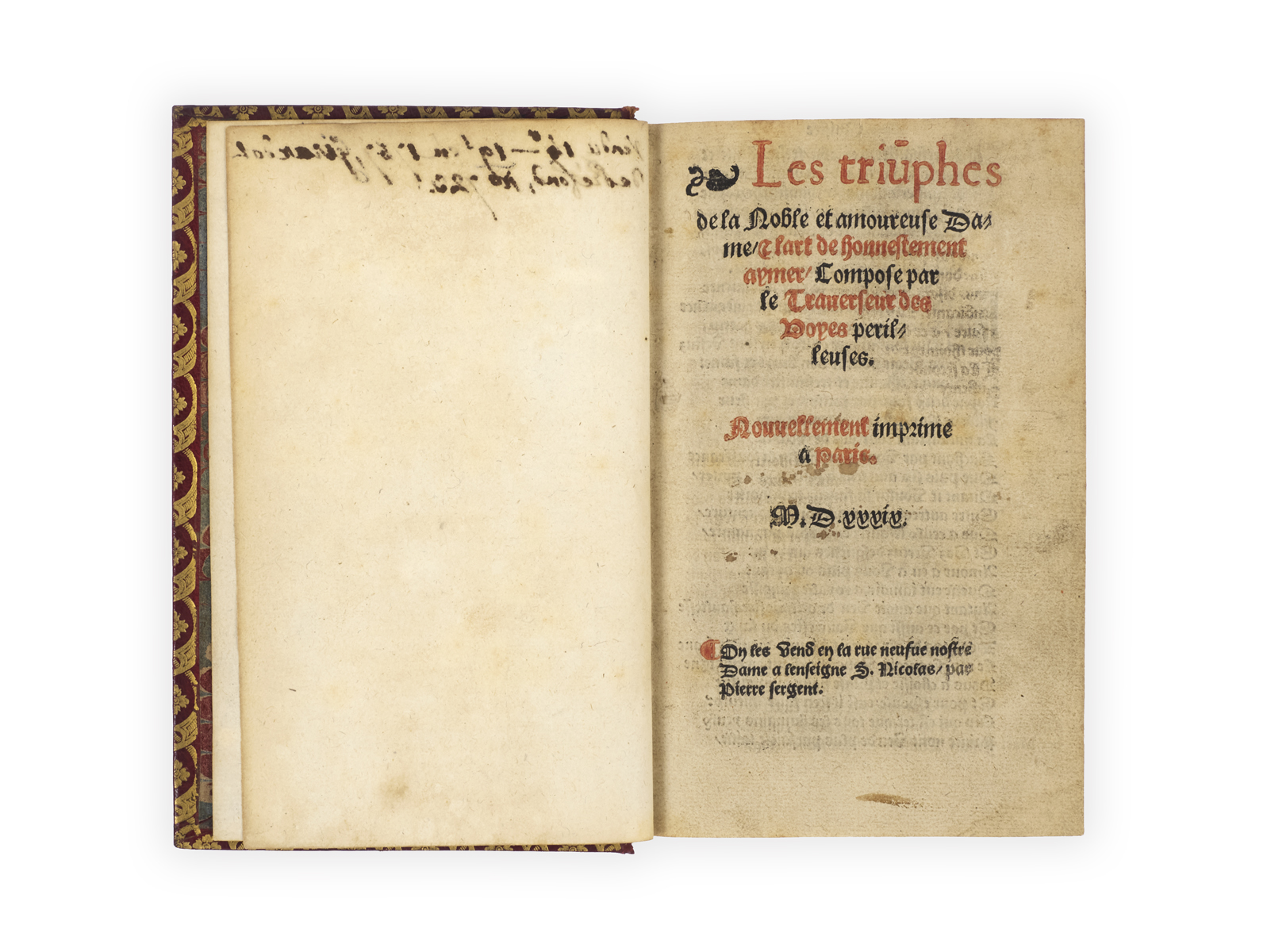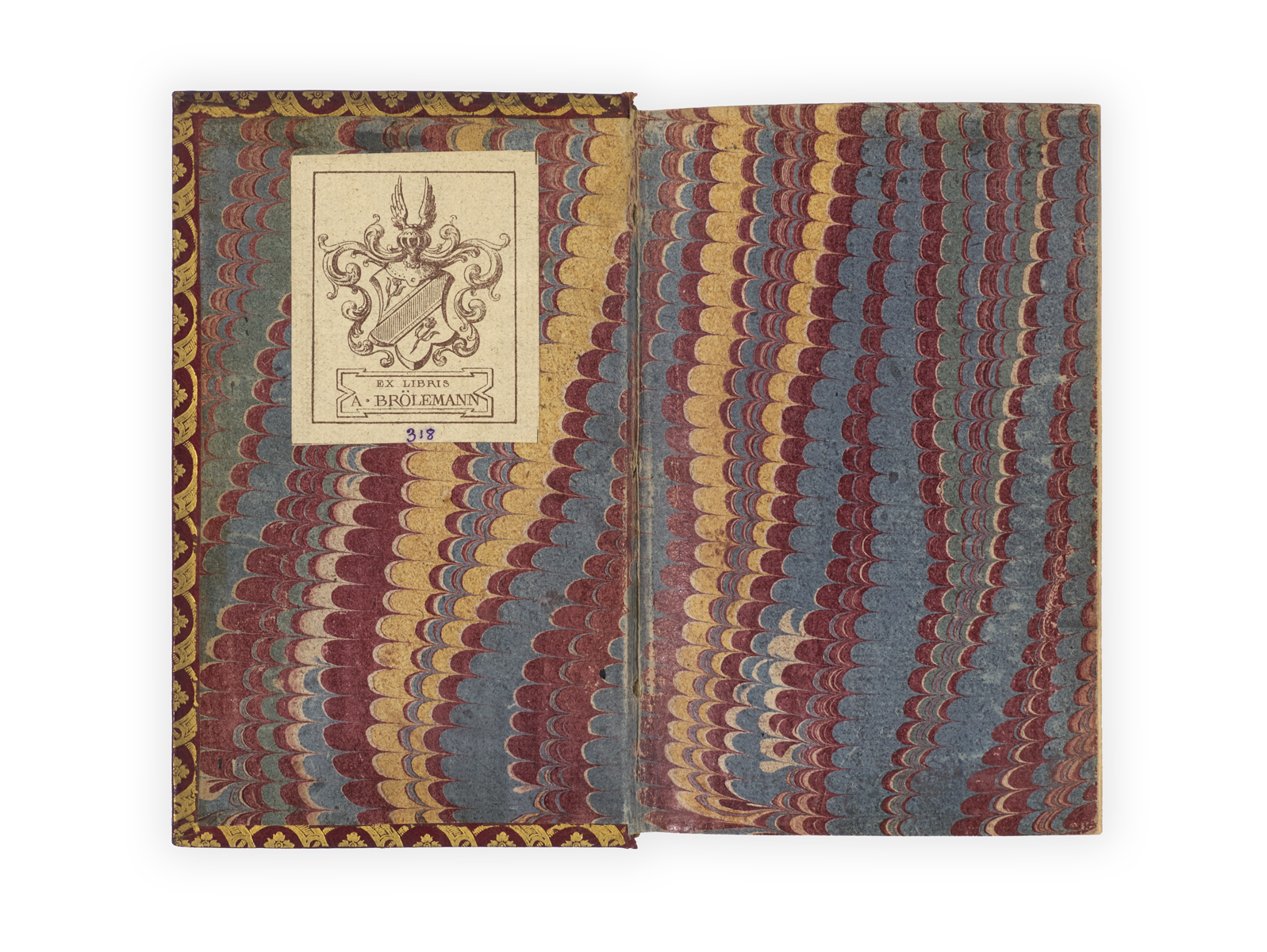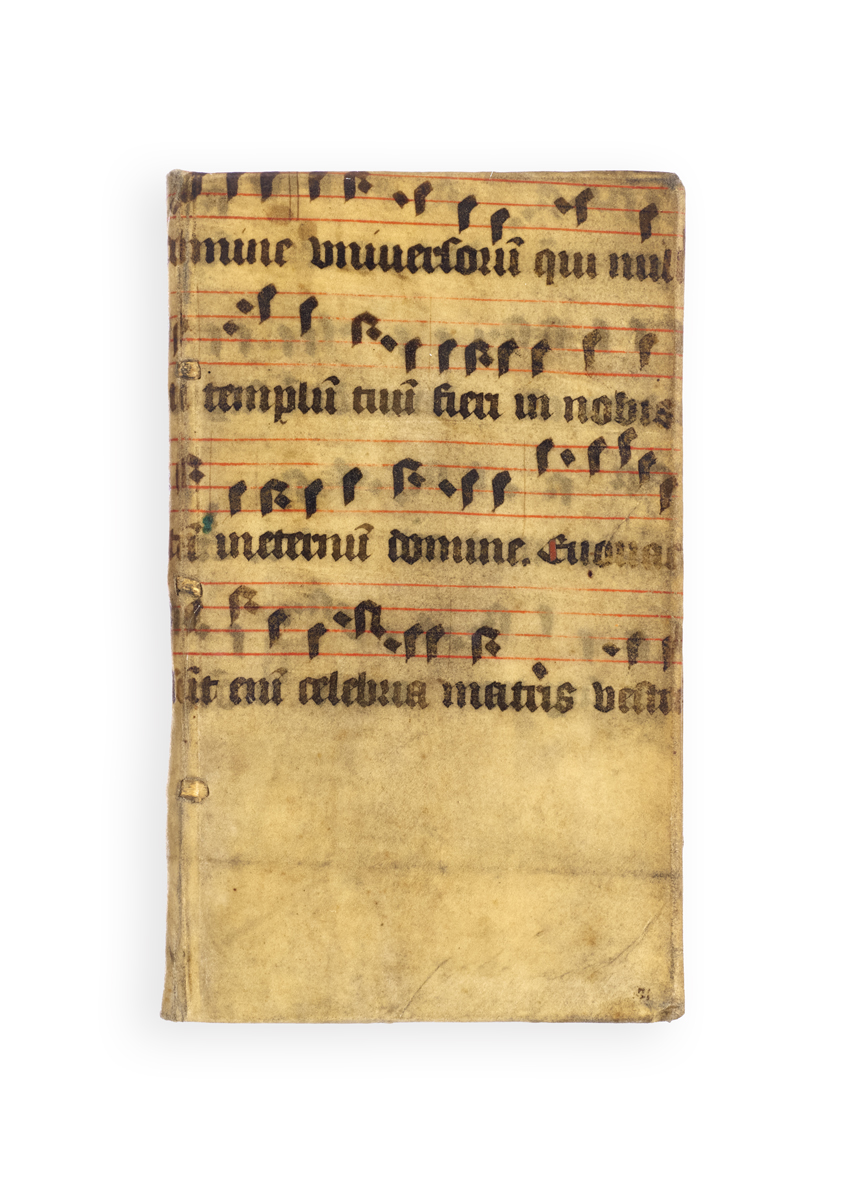



THE EDUCATION OF THE SOUL
THE PREFOND–BRÖLEMANN COPY
[BOUCHET, Jean.]
Les triu[m]phes de la noble et amoureuse dame, et l’art de honnestement aymer, compose par le Traverseur des voyes perilleuses. Nouvellement imprime a Paris.
Paris, Estienne Caveiller for Pierre Sergent, 6 June 1539.
8vo, ff. [12], CCCXC (recte 392); printed in bâtarde type, title-page printed in red and black, criblé woodcut initials throughout; trimmed closely at head in places but with no loss of text; a handsome copy in nineteenth-century French red morocco, spine gilt-ruled in compartments and lettered directly in gilt, turn-ins roll-tooled in gilt, edges stained yellow and speckled red, marbled endpapers; a few scuffs to boards, light wear to joints; armorial bookplate of Arthur Brölemann, numbered ‘318’ in manuscript to front pastedown; eighteenth-century inscription to front flyleaf ‘Vendu 16-19s en 1757, Girardot de Préfond, no. 723'.

Added to your basket:
Les triu[m]phes de la noble et amoureuse dame, et l’art de honnestement aymer, compose par le Traverseur des voyes perilleuses. Nouvellement imprime a Paris.
Unrecorded issue of Jean Bouchet’s contemplative work of moral theology in prose and verse explicitly intended for a female readership, following the personified Soul in dialogue with several virtues as she attempts to combat the forces of earthly temptation with the power of divine grace.
A friend of Rabelais and Louis de Ronsard, Jean Bouchet (1476–c. 1558) was a solicitor’s clerk who obtained the position of procureur for the important La Trémouille family in 1510 and in January 1520 arranged the entry of Francis I into Poitiers. Much inspired by the works of Jean Gerson and St Antoninus of Florence, Les triumphes de la noble et amoureuse dame traces the Soul’s journey, beginning with her entry into the world (when she is betrothed to Christ at baptism). Accompanied by Understanding, Will, Memory, Reason (her governess) and Sensuality (her chambermaid), the Soul receives a moral and physical education at the hands of Theology and the four cardinal virtues before encountering challenges in the form of the ‘Prince of Pleasure’ and the ‘Brothel of Obstinacy’ in the realm of Youth, and Flesh and the Devil in the land of Old Age. ‘The very final section is a discussion between the author and Theology after the Soul has disappeared into the straits of death; it is not revealed to us whether or not the Soul is saved, instead we must be content with the hope and the positive signs that she has probably been saved, and Theology explains predestination, God’s prescience, and free will’ (Britnell, ‘Religious instruction in the work of Jean Bouchet’ in Pettegree, The Sixteenth-Century French Religious Book (2017)).
Dedicated to Eleanor of Austria (1498–1558), Queen of France and wife of Francis I, Bouchet’s narrative of the Soul’s journey addresses a female readership and emphasises the necessity of producing such a work in the vernacular: his primary objective is to distract women from reading the Old and New Testaments in potentially ‘dangerous’ translations, as well as ‘certain short treatises by some German heretics translated from Latin into French, which under the sweetness of the evangelical doctrine there are interposed several errors too scandalous and pernicious to Christianity’ (a5v, trans. Kem, Pathologies of Love (2019), p. 44). The discourses between the Soul and various virtues touch upon such topics as anatomy, hygiene, dietetics, raising children, chastity, and the relationship between husband and wife.
This edition was printed by Etienne Caveiller and distributed by several Parisian booksellers, among them Jean Longis, Denis Janot, Oudin Petit, and Simon Colinet. In all such copies, the colophon (mentioning only Caveiller) remains the same. We have found only one other copy of the 1539 edition distributed by Pierre Sergent at auction. The imprimeur-libraire Pierre Sergent, based at the Sign of St Nicholas, appears to have specialised largely in chivalric romances and published editions of Les triumphes de la noble et amoureuse dame in 1536 and 1545.
Provenance:
1. Sold at the Girardot de Préfond sale (De Bure, Catalogue des Livres du Cabinet de Monsieur girardot de Prefond, 1757, lot 723). ‘Paul Girardot de Préfond was a timber-merchant who fell into an apathetic state on retiring from active business. His physician, Hyacinthe Baron, was an eminent book-collector, and he advised the patient to take up the task of forming a library. So successful was the prescription that the merchant became renowned during the next half century for his superb bindings, his specimens from Grolier’s stores, and the Delphin and Variorum classics which he procured from the library of Gascq de la Lande … Some of his rarest books were sold in 1757’ (Elton, The Great Book-Collectors, 1893, pp. 198–99).
2. With the bookplate of Arthur Brölemann (1826–1924), grandson and heir to the library of the prolific manuscript collector Henri-Auguste Brölemann (1775–1854), who amassed a collection of over four thousand volumes.
Neither OCLC nor CCfr find copies printed by Caveiller for Sergent.
On the 1539 Caveiller edition distributed by other booksellers, see BM STC French, p. 77; USTC 14858. Adams B 2583; Brunet I, col. 1162; Gay II, p. 47; Index Aureliensis V, p. 45; Pettegree & Walsby, French Vernacular Books I: 6759; Renouard, Bibliographie des éditions de Simon de Colines, pp. 303–4 (citing Petit, Janot, Sertenas, and Longis but not Sergent); Tchemerzine II, p. 70.

